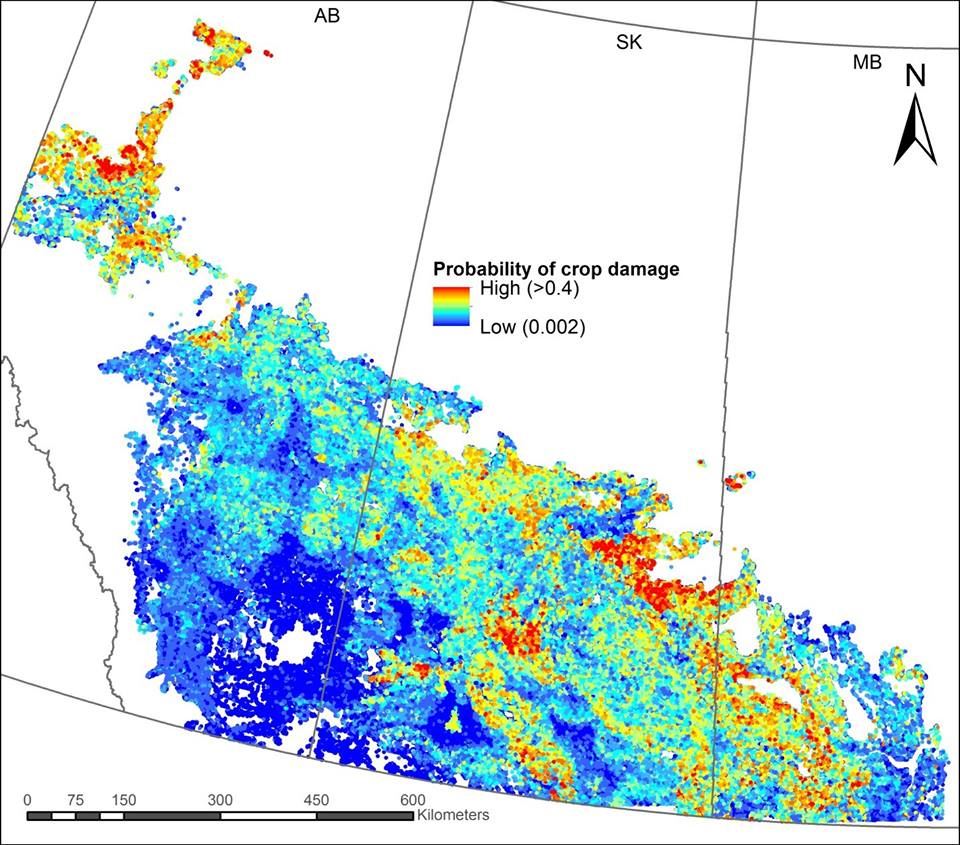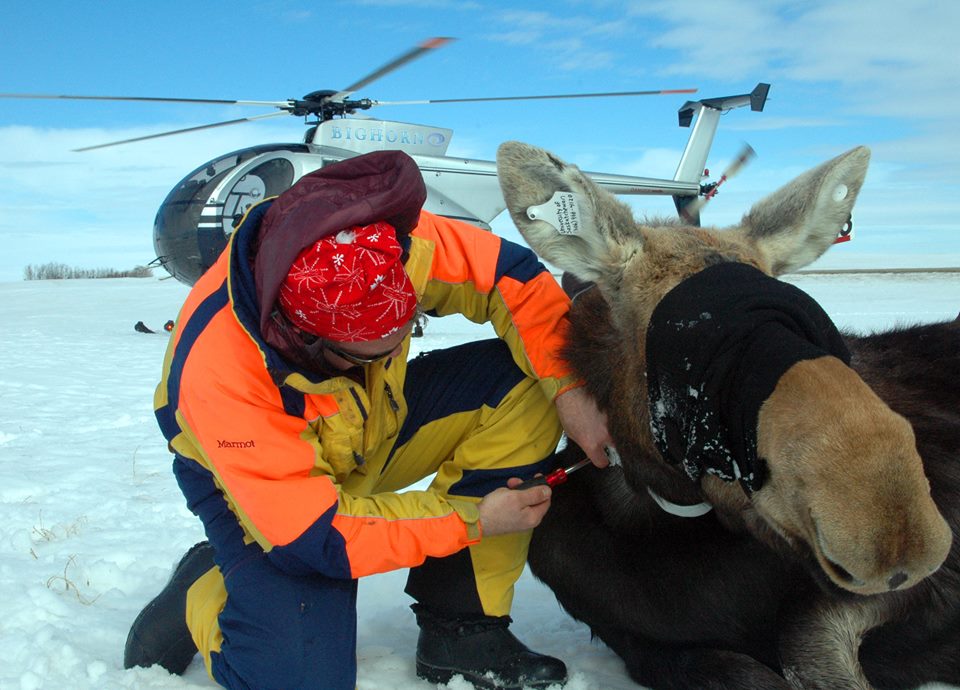A meandering moose became a star on social media Monday when it stopped for a dip in Regina’s Wascana Lake.


The massive animals have become increasingly common over the past 30 years on Prairie farmland — an environment markedly different from their usual heavily wooded habitat.
Ryan Brook, an associate professor at the University of Saskatchewan in the College of Agriculture and Bioresources, has been researching these farmland moose since 2013.
“But at the end of the day it really does turn out that there’s a lot of really good habitat in rural Saskatchewan.”
Brook directs the Saskatchewan Farmland Moose Project (SFMP). He and his fellow researchers recently finished collecting GPS data from 40 female moose tracked over a period of three years.
The research was collected in an effort to learn where and when moose will cross highways and roadways, and understand how they interact on the Prairies.
The first ever peer-reviewed publication on farmland moose was published in May based on the data SFMP collected.
“Over the last about 30 years we’ve noticed a very dramatic change.”
“Where farmland moose used to be very rare to see… now they’re very common throughout many areas even all the way down to the US border,” Brook said.
Brook said Saskatchewan farmland agrees with the moose. With plenty of sloughs to cool down in and no real predators (black bears, wolves) to worry about, their population has remained strong.
“What’s clear from our research is that calf survival is very high.”
Living on farmland also provides hungry moose with an abundance of nutritious food.
“The canola is in perfect bloom right now across the prairies. Those moose will just flop down in one of those fields and pick off those yellow blossoms and eat a huge amount of canola,” he said.
That crop damage can eat into a farmer’s yield, but the greater concern comes when moose approach busy highways.
READ MORE: Warman fire chief warns of increased moose sightings on highways
According to SGI, Saskatchewan drivers filed 200 moose collision claims from January 1 to March 31, 2016.
“One of our collared animals was actually hit on the northbound lane of Highway 11 and was killed in a collision. That certainly reminds us that the collision risk is significant,” Brook said.
The research is especially timely as moose populations in other habitats across Canada appear to be dwindling. In Manitoba, the Wildlife Society estimates that the moose population has declined from a high of over 45,000 animals to just 20,000.
READ MORE: Wildlife group wants action on dwindling Manitoba moose population
“It’s really important in the bigger context. There are a number of moose populations in North America that are in serious, really concerning decline.”
“I think it’s going to start to give us some better insight into why some moose are doing well and some not so much.”












Comments